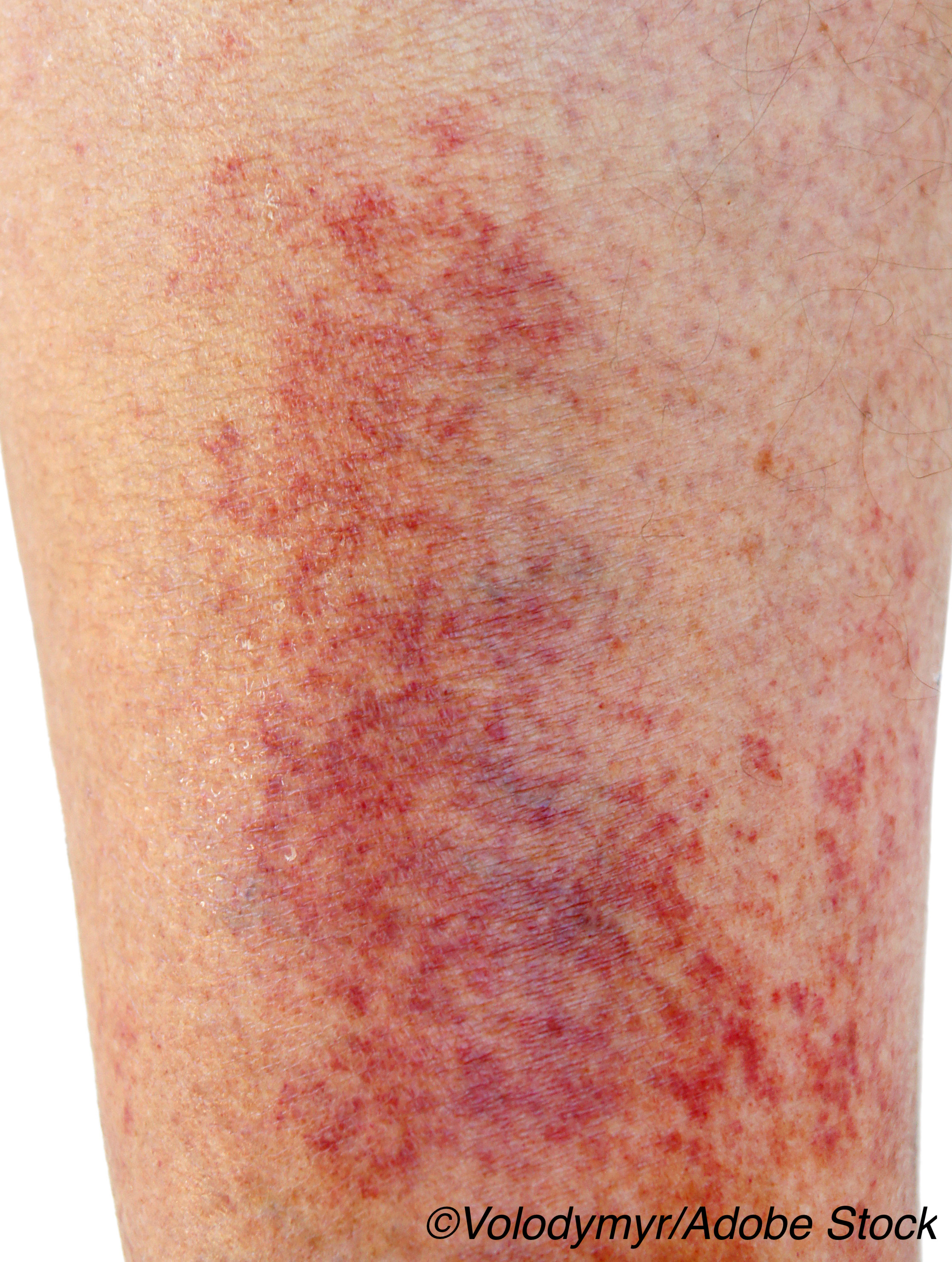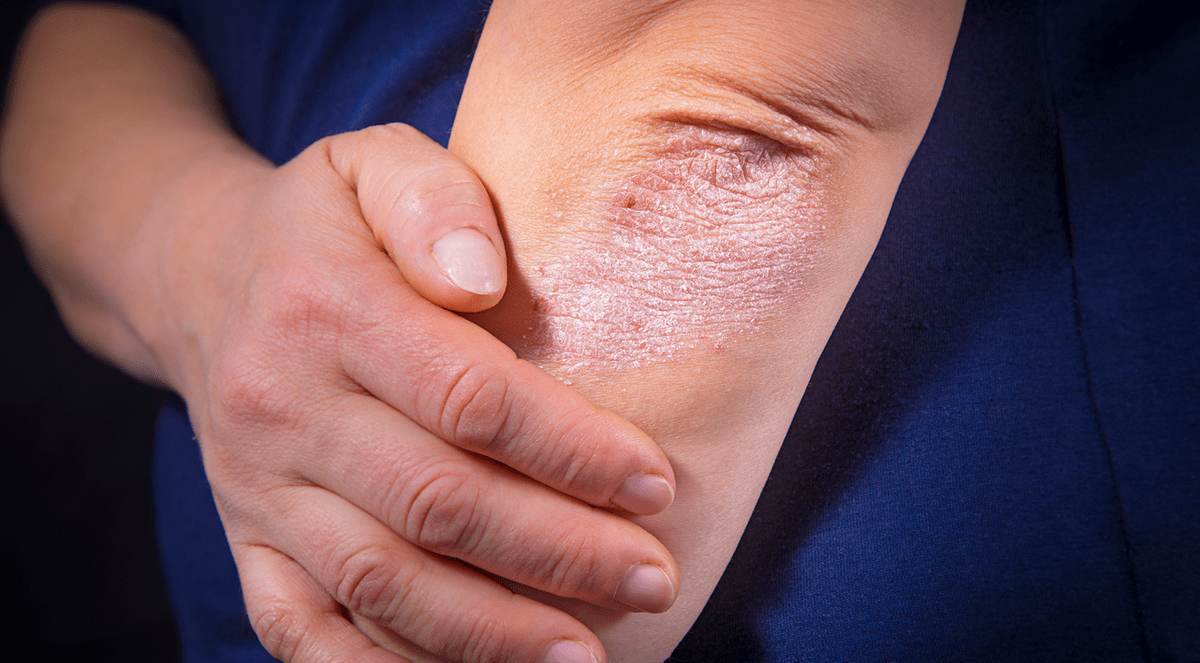 Embedding dermatologists into cancer clinics increased the use of guideline-recommended prophylaxis protocols against cutaneous toxicity in patients treated with the epidermal growth-factor receptor (EGFR) inhibitor, cetuximab, a retrospective cohort study has shown.
Embedding dermatologists into cancer clinics increased the use of guideline-recommended prophylaxis protocols against cutaneous toxicity in patients treated with the epidermal growth-factor receptor (EGFR) inhibitor, cetuximab, a retrospective cohort study has shown.
More importantly, preemptive management of cutaneous toxicity significantly reduced the need for first and second rescue treatment after patients developed a rash as well as the need to modify the dose of cetuximab or interrupt treatment compared to patients who received no prophylaxis, the same analysis found.
In an overall cohort of 208 patients, those who received prophylaxis against cutaneous toxicity were 94% less likely to require a first rescue treatment for rash at an adjusted odds ratio (OR) of 0.06 (95% CI, 0.02-0.16; P=0.02) compared with patients who did not receive prophylaxis, Nicole LeBoeuf, MD, MPH, Dana-Farber/Brigham and Women’s Cancer Center, Boston, Massachusetts and colleagues reported in JAMA Dermatology.
They were also 74% less likely to require a second rescue treatment for rash at an adjusted OR of 0.26 (95% CI, 0.08-0.83; P=0.02) again compared to patients who did not receive prophylaxis, researchers added.
Rates of first and second rescue treatments served as proxies for rash severity, as the authors pointed out.
Patients exposed to prophylaxis also were 79% less likely to require a change in the dose of cetuximab or an interruption in their treatment at an adjusted OR of 0.21 (95% CI, 0.06-0.81; P=0.02) compared to the non-prophylaxis group, the authors also noted.
“Up to 90% of patients treated with an epidermal growth factor receptor inhibitor (EGFRi) experience cutaneous toxic effects that are negatively associated with quality of life and lead to treatment interruptions,” Yu and colleagues explained.
“[T]he results of this study highlight the value of integrating dermatologic care and education into oncology centers by increasing adherence to evidence-based prophylaxis protocols for rash…which may minimize toxicity-associated chemotherapy interruptions and improve quality of life,” they suggested.
STAT Established
The Skin Toxicities from Anticancer Therapies (STAT) program was established in 2014 at the main campus of the Dana-Farber/Brigham and Women’s Cancer Center where it offered dermatologic care for oncology patients experiencing adverse dermatologic events.
In addition, 4 satellite locations outside of the main campus were also established in order to provide the same anti-cancer treatments, interventions and clinical trials offered at the main campus.
The main goal of the study was to assess adherence to evidence-based prophylaxis protocols for EGFR inhibitor-associated rash along with outcomes among patients who received prophylaxis compared to those who did not both on the main campus as well as at the 4 satellite locations.
Data were analyzed 2 years before and 2 years after the STAT program had been established. The prophylaxis protocol consisted of preemptive use of doxycycline hyclate, topical corticosteroids, moisturizers, and sunscreen.
In 2012, there were 118 patients, median age 62.4 years (range, 23.5-91.7 years) who received cetuximab while in 2017, there were 90 patients, median age 62.5 years (range 30.7-90.5 years) who received the same treatment.
“Most patients had stage IV disease at cetuximab treatment initiation,” researchers pointed out. Cancers treated with the EGFR inhibitor included colorectal cancer, head and neck cancer and cutaneous squamous cell carcinoma.
The median duration of treatment was 78 days in 2012 and 66 days in 2017 and over 80% of patients in both groups received systemic corticosteroids together with cetuximab.
On treatment initiation, 25% of patients received prophylaxis against cetuximab-induced rash in 2012 while 47% of patients received prophylaxis against rash in 2017 (P<0.001), Yu and colleagues noted.
The increased use of prophylaxis between 2012 and 2017 was observed primarily at the main campus with no noticeable increase in prophylaxis use observed at the 4 satellite locations.
The type of preemptive treatment also changed between 2012 and 2017, as investigators noted.
For example, preemptive tetracycline use increased from 45% in 2012 to 71% in 2017 (P=0.02) as did the use of topical corticosteroids from 7% in 2012 to 57% in 2017 (P<0.001).
In contrast, the use of topical antibiotics decreased from 79% in 2012 to 43% in 2017 (P=0.002).
However, “[t]here was no significant difference in sunscreen or moisturizer use from 2012 to 2017,” investigators added.
As was the case with increased use of prophylaxis overall between 2012 and 2017, the increase in topical corticosteroid use as well as the decrease in topical antibiotic use was seen primarily at the main campus, with no significant change in the use of either agent at the satellite locations, as the authors pointed out.
Some 60% of patients in the 2012 cohort and 66% of patients in the 2017 cohort developed grade 1 rash in response to cetuximab.
Another 11% of patients in the 2012 cohort and 9% of those in the 2017 cohort developed grade 2 rash while 6% of patients in the 2017 cohort developed grade 3 rash (There appeared to be no one in the 2012 cohort who developed grade 3 rash).
No patients in either cohort developed grade 4 rash in response to cetuximab.
Importantly, the incidence of rash was similar between patients who received prophylaxis and those who did not.
As the authors noted, survival is significantly better in patients who develop at least a grade 2 rash in response to cetuximab compared to patients who develop no rash or who experience a less severe rash.
At 2 years, no significant difference in overall survival was observed based on prophylaxis status between the 2 groups either when adjusted for race, age and cancer stage among patients with either colorectal or head and neck cancer.
In an editorial that accompanied the study, Bernice Kwong, MD, Stanford University School of Medicine, Palo Alto, California, pointed out that dermatologists have a growing opportunity to engage in multidisciplinary efforts to provide expert guidance in how best to manage cutaneous adverse events associated not only with EGFR inhibitor therapy but immune checkpoint inhibitor therapy as well.
“Through the past decade, the National Comprehensive Cancer Network guidelines have increasingly called on dermatologists to manage skin toxic effects in patients receiving targeted therapies or immunotherapies, highlighting the importance of dermatologic expertise in multidisciplinary cancer care,” she said.
The current study confirms that the presence of dermatologists within oncology practices is an “effective” and “integral” component of the cancer care patients receive, Kwong noted.
Moreover, “[w]hen patients with cancer develop cutaneous toxicity from targeted anticancer agents, more than 25% of referring clinicians recommend the interruption of therapy,” the editorialist observed.
This study showed that dermatologic consultation reduced the need for treatment to be suspended unnecessarily, as Kwong pointed out.
“Conversely, in cases of life-threatening drug reactions, dermatologists can recognize what may initially be perceived as innocuous cutaneous reactions that may herald severe or potentially fatal drug reactions,” she stated.
“Timely and consistent access to dermatologic expertise in oncology practices is critical to prevent unnecessary discontinuation of life-saving anticancer therapy, especially as multiple studies have demonstrated that anticancer therapy-associated skin toxicity may be associated with a positive response to anticancer therapy,” she underscored.
-
Embedding dermatologists into cancer clinics increased the use of rash prophylaxis over time in patients receiving cetuximab.
-
Preemptive management of cutaneous toxicity reduced the need for dose modification and interruption of treatment compared with no prophylaxis.
Pam Harrison, Contributing Writer, BreakingMED™
LeBoeuf reported receiving personal fees from Bayer, Sanofi, and Seattle Genetics.
Kwong reported serving as a consultant for Genentech and Oncoderm as well as serving on the advisory board for Kyowa Kirin.
Cat ID: 105
Topic ID: 75,105,730,105,935,192


